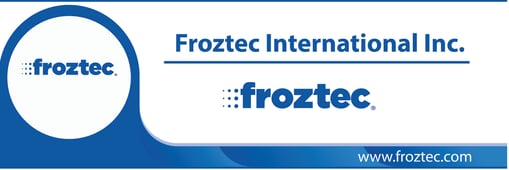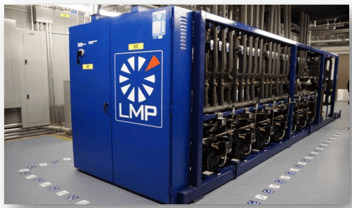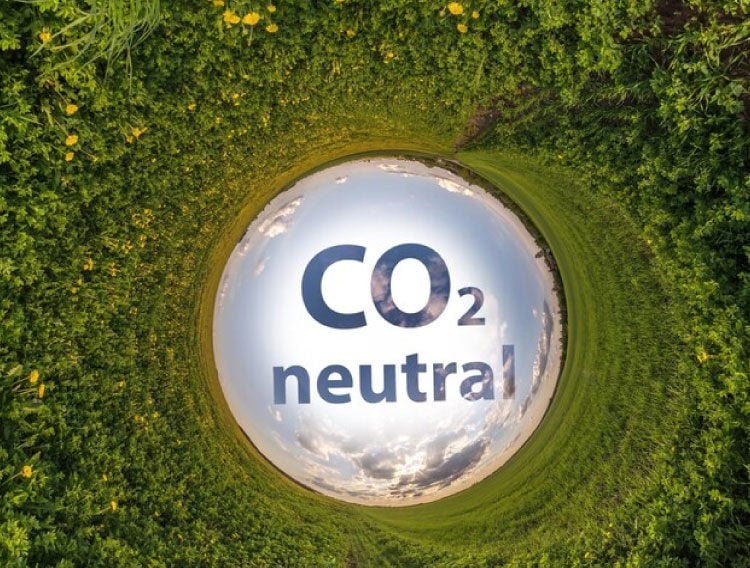Industrial refrigeration contractors find themselves at a crucial crossroads in the ongoing search for solutions that balance operational efficiency with environmental sustainability. The choice of the right refrigerant affects system performance and environmental impact. In this context, carbon dioxide (CO₂) emerges as a promising alternative, offering economic and ecological benefits.
Refrigeration systems that use CO₂ as a refrigerant have consistently demonstrated superior energy efficiency compared to their counterparts that use traditional refrigerants like HFCs and HCFCs.
Moreover, CO₂-based refrigeration systems offer greater operational flexibility, effectively adapting to load and temperature conditions. This responsiveness allows for precise control of the refrigeration process, optimizing system performance and ensuring reliable operation even in demanding environments.
Benefits of CO2 as a Refrigerant.
- High Heat Transfer Coefficient: In its supercritical state, CO₂ exhibits unique thermophysical properties that allow for more efficient heat exchange, resulting in greater efficiency in the refrigeration cycle. This enables a reduction in equipment size and energy consumption, optimizing operating costs.
- High Critical Point: CO₂ has a significantly higher critical point than common HFC refrigerants. This feature allows CO₂ to operate in a transcritical cycle, where the refrigerant does not change phase during compression. This eliminates the need for a liquid separator and simplifies system design.
- Critical Pressure and Temperature: CO₂ has a critical temperature of approximately 31°C and a critical pressure of around 73.8 bar. These characteristics define the limits within which CO₂ can exist in its supercritical state. Low Viscosity: The low viscosity of CO₂ in its liquid phase facilitates circulation within the system, reducing pressure losses and improving overall efficiency.
- Low Viscosity: The low viscosity of CO₂ in its liquid phase facilitates circulation within the system, reducing pressure losses and improving overall efficiency.
- Non-flammable and Non-toxic Properties: Unlike some synthetic refrigerants, CO₂ is non-flammable and non-toxic, making it a safer option for use in occupied or sensitive environments.
- Low Global Warming Potential (GWP): CO₂ has a GWP of 1, making it an attractive alternative compared to HFC refrigerants, which have high GWPs and are being gradually phased out by regulations.
- Availability: CO₂ is an abundant and low-cost gas, making it accessible for a wide range of applications

Applications of CO₂ (R744) in Industrial Refrigeration.
- Low-Temperature Refrigeration: CO₂ is ideal for freezing and deep-freezing applications, such as food and pharmaceutical industries.
- Medium-Temperature Refrigeration: CO₂ can be used in various commercial and industrial refrigeration applications, such as supermarkets, warehouses, and data centers.
- Cascade Systems: CO₂ can be used in cascade systems alongside other refrigerants to extend the operating temperature range.
Considerations for the Use of CO₂ (R744)
- Working Pressure: CO₂ operates at higher pressures than traditional refrigerants, which requires system components and designs specifically suited to handle these conditions.
- Operating Temperature: CO₂ refrigeration systems are more efficient at lower operating temperatures. Therefore, their use in high-temperature applications may require specific configurations.
- Initial Cost: The initial cost of CO₂ systems can be higher than that of traditional systems, but energy and maintenance savings over time can offset this investment.
- Specialized System Designs: Designing CO₂ refrigeration systems requires expertise and specialized knowledge due to the refrigerant’s unique properties. Contractors must be trained to work with CO₂ and have the proper tools for handling and installation.
- System Pressure Management: CO₂ systems operate at significantly higher pressures compared to traditional systems. However, with proper design and the implementation of appropriate safety measures, these challenges can be successfully managed.
- Material Compatibility: Another key consideration is CO₂'s compatibility with materials used in refrigeration system construction. At high pressures and concentrations, CO₂ can be corrosive to certain materials, making it essential to choose suitable materials that are compatible with the system’s operating conditions.

In a landscape where efficiency and sustainability are both commercial and environmental imperatives, the use of CO₂ as a refrigerant in industrial refrigeration systems presents itself as a viable and cost-effective solution.
CO₂ offers an opportunity to stand out from the competition and provide clients with more sustainable and efficient refrigeration solutions, leveraging the technical and environmental advantages that CO₂ offers. By prioritizing the integration of innovative technologies and the development of technical capabilities, companies can not only enhance their competitiveness in the market but also make a significant contribution to global environmental protection.
An honest and accurante assenssment of your specific needs is key to consolidating a project in needd of maximum efficiency.

Related
Discover more related articles

4 key points in the transcritical co2 system
The design of a transcritical CO2 system is a challenge even for a refrigeration expert. The correct implementation and quality of the equipment...
Read more »
How to optimize costs in a CO2 cooling system
To successfully reduce costs in the implementation of a CO2 system, either with the intention of replacing an HFC system or for new installations,...
Read more »